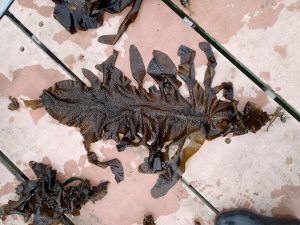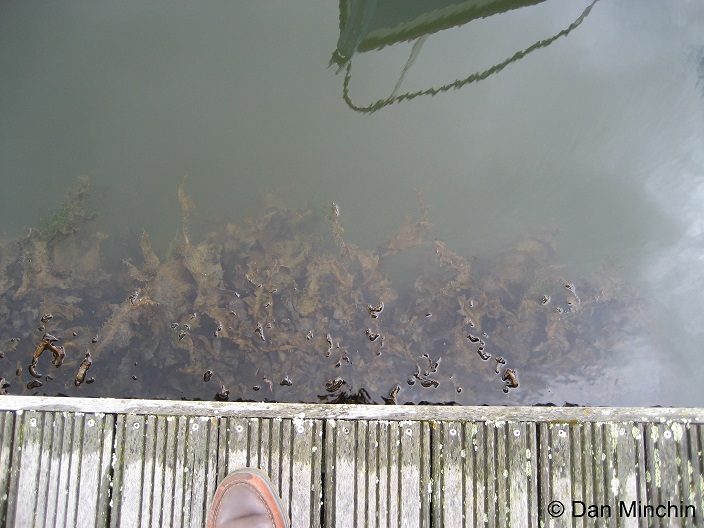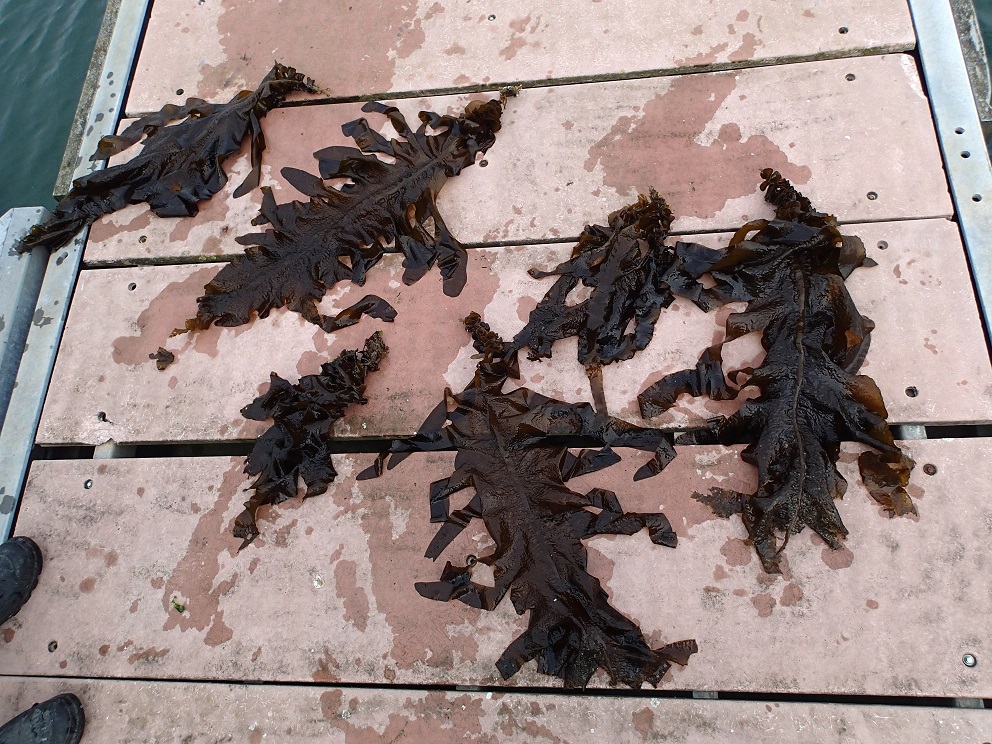Common name(s): Japanese kelp; Wakame; Sea mustard
Why the concern?
- Infestations can foul shellfish beds and cages, resulting in higher costs and slower growth of the shellfish by restricting the flow of water through the cages. However, the extent of this impact is unknown.
- The climatic conditions in Ireland may suit this species and there are suitable habitats available
- Control on a wide scale is impossible. At a local level the species has been eradicated in places outside of Ireland but with great expense.
- Species has been recorded in Northern Ireland (Carrickfergus Marina, Sept, 2012) and the Republic of Ireland (Carlingford Lough, Sept, 2014).
What does it look like?
- Golden-brown in colour with a lighter coloured stem and a branched holdfast
- The stipe has very wavy edges, giving it a ridged appearance
- Broad, flattened leaf shaped blade with a distinct midrib and wavy margins
Where might I see it? In Europe, it is found subtidally, often growing on man-made structures such as marina pontoons.
Invasive status: Before this species was recorded in Ireland it was risk assessed as having the potential to be a high impact invasive species by Invasive Species Ireland.
Introduction status: The species is established in Northern Ireland site while tens of plants were removed from the Republic of Ireland site it is unclear as yet how many plants remain or if it is an established site.
Distribution Frequency: Rare
Actions taken to date: State Agencies and Local Authorities have been notified. Recorder removed tens of plants from the Republic of Ireland site when observed but more may remain.
Pathway of introduction/vector of spread: it is unclear what pathway or vector of spread resulted in the presence of Japanese kelp at these sites. ‘The preponderance of U. pinnatifida at marina sites strongly implicates recreational craft in its spread’ (NBN Gateway 2013 in Minchin and Nunn, 2014).
Additional information:
- AlgaeBase: www.algaebase.org
- Invasive Species Ireland risk assessment summary: http://invasivespeciesireland.com/toolkit/risk-assessment/prioritisation/potential-species/
- Minchin. D. and Nunn. J. (2014) The invasive brown alga Undaria pinnatifida (Harvey) Suringar, 1873 (Laminariales: Alariaceae), spreads northwards in Europe (pp 57-63). BioInvasions Records (2014) Volume 3, Issue 2: 57–63 http://www.reabic.net/journals/bir/2014/Issue2.aspx
- Synonyms: Alaria pinnatifida Harvey 1860; Ulopteryx pinnatifida (Harvey) Kjellman





